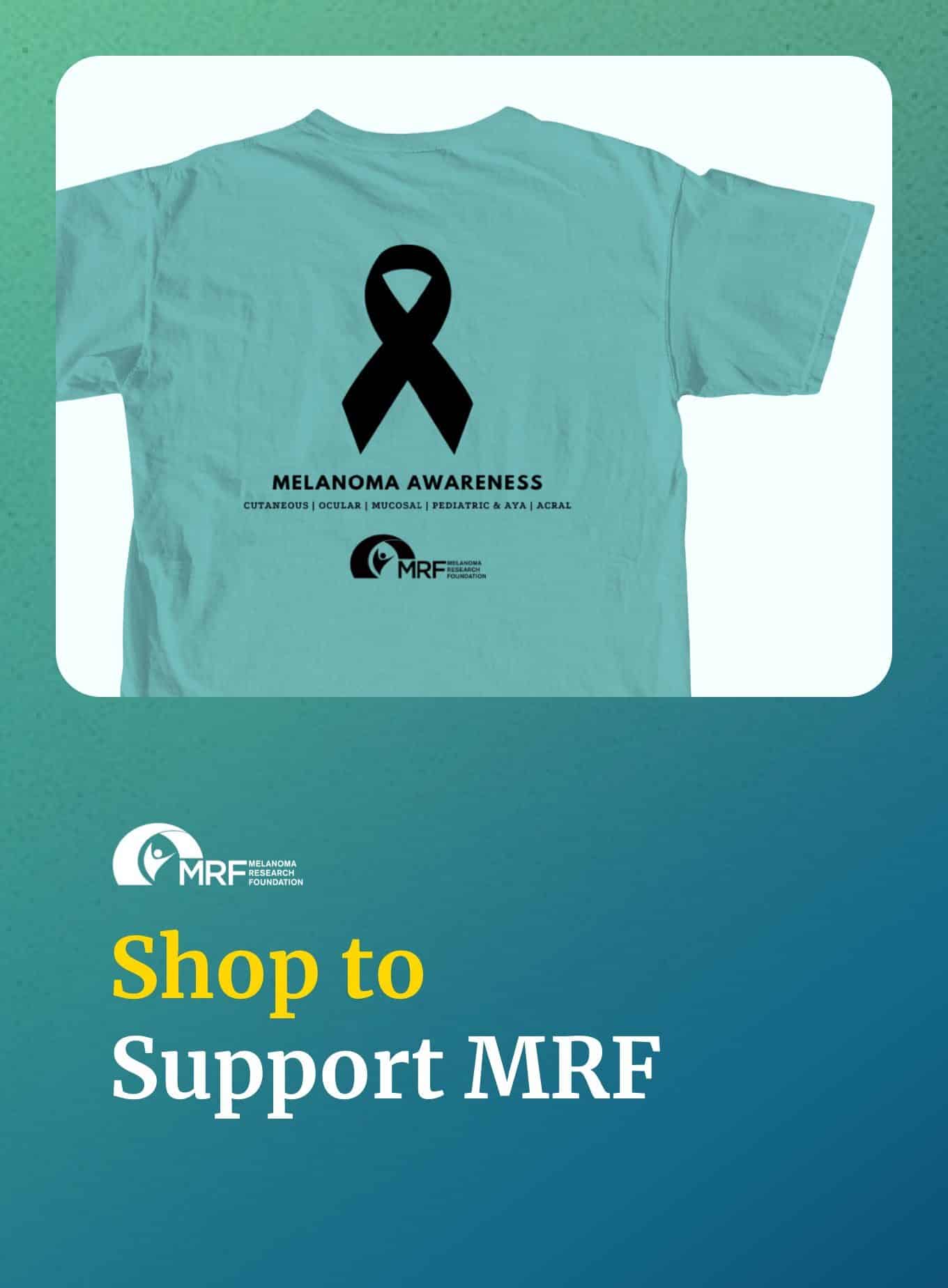May 2024
Melanoma Awareness Month
The MRF launches its #GetNaked campaign, this Melanoma Awareness Month, and honors the melanoma community, highlights the prevention of melanoma and raises awareness and critical funds to support all melanoma patients and their families. You too can help make an impact this May!
#GetNaked
We proudly present our newest #GetNaked spokesperson – Raheem Mostert!
We are pleased to announce the launch of our annual award-winning #GetNaked campaign in recognition of melanoma awareness. Raheem Mostert, Miami Dolphins Running back (#31), melanoma advocate, supporter and donor will serve as this year’s #GetNaked campaign spokesperson. In this role, Raheem will join the MRF’s #GetNaked campaign focused on increasing public health education around the importance of melanoma prevention and early-detection, while highlighting the importance of annual dermatological skin checks.
Please view the official #GetNaked press release here. All media inquiries should contact [email protected].
Learn more about Raheem’s inspiring story and why he encourages everyone to #GetNaked in his guest blog.
Heading to New York City this summer? Stop by 1500 Broadway to view the #GetNaked Times Square Billboard featuring #GetNaked spokesperson, Raheem Mostert, beginning May 1–July 31. #GetNaked – It may save your life.
Hear from MRF CEO Kyleigh LiPira in this welcome to Melanoma Awareness Month message
Patient Symposia:
Engage with topics ranging from melanoma prevention, diagnosis, treatment and survivorship during two hybrid patient symposia held in May:
- Saturday, May 18 8am – 3pm PT: : Fred Hutchinson Cancer Center Patient and Caregiver Symposium (Virtual and In-Person)
- Monday, May 20 11:30am – 4:30pm ET: University of North Carolina Lineberger Comprehensive Cancer Center Patient and Caregiver Symposium (Virtual and In-Person)
Instagram Live “Derm-fluencer” Series:
Join the MRF and Instagram’s most influential dermatology and skin health experts in May for engaging and educational conversations on topics including sun safety, incorporating sun protective clothing, debunking popular dermatological myths and more!
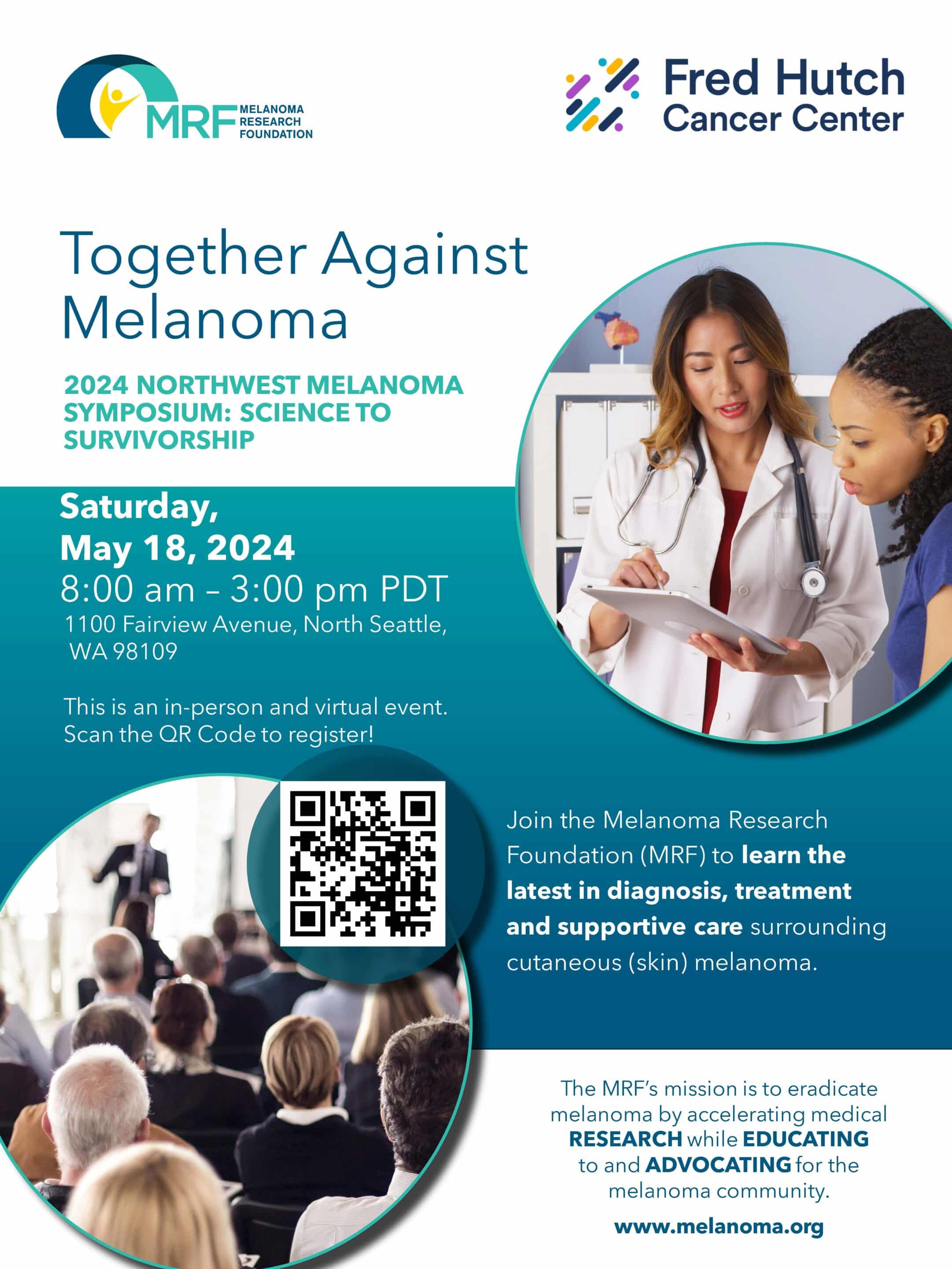
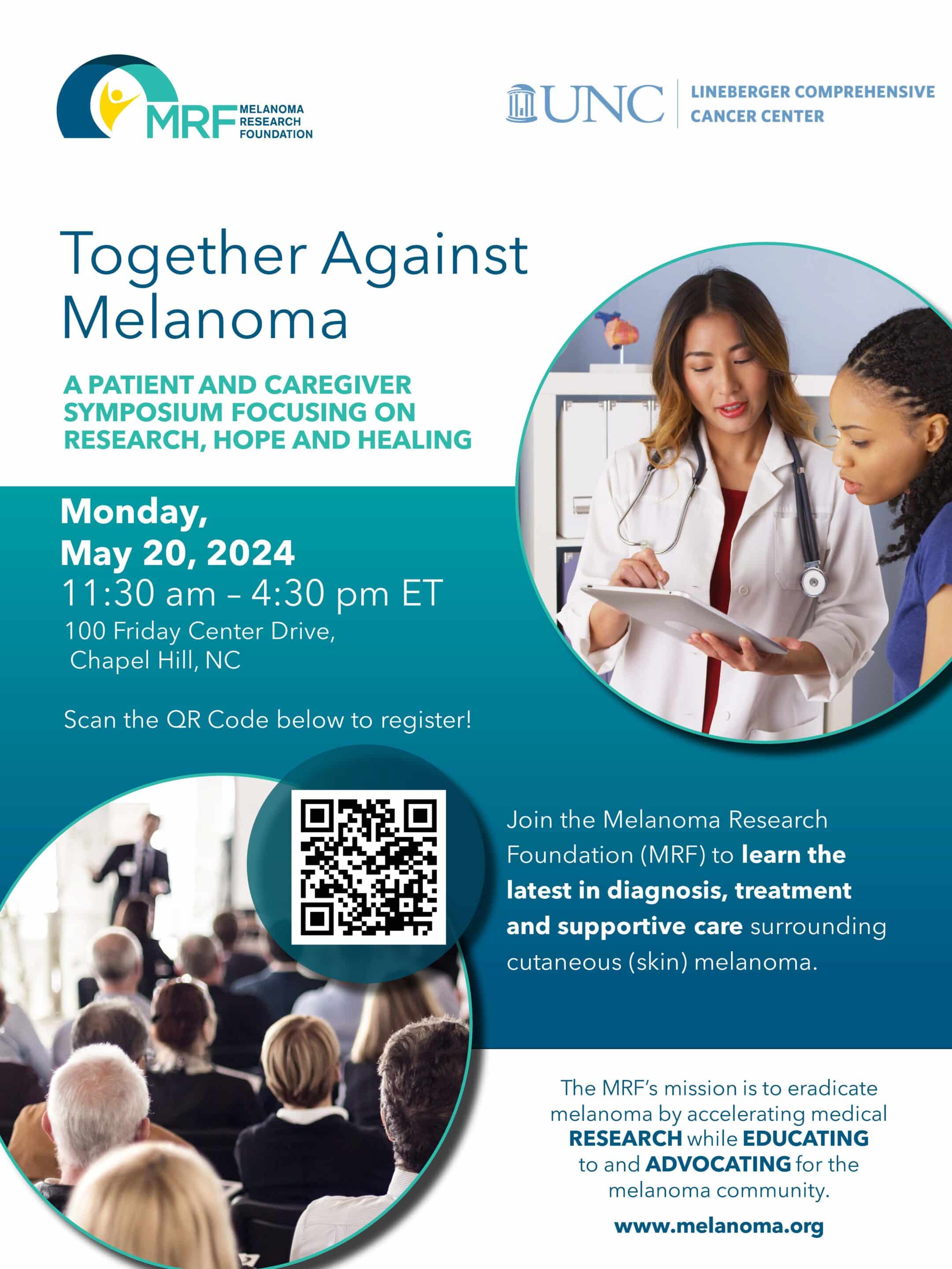
TikTok Filter
The MRF in partnership with F Cancer has launched a fun, informative and engaging animated filter to help advance critical topics such as sun safety, prevention, and early detection. The filter is available on both TikTok and Instagram, beginning May 15. Download the filter and be sure to tag us and post on your socials to help increase visibility and engagement!
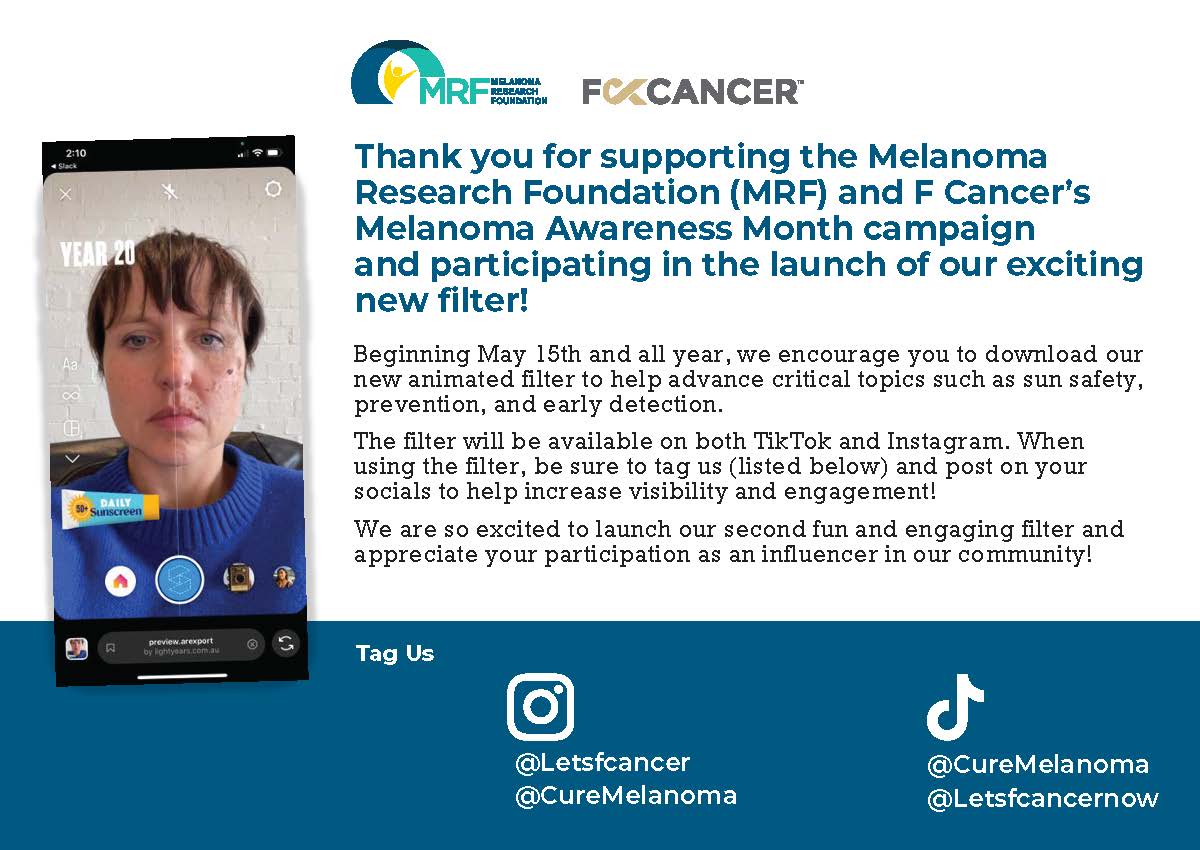
Support the Melanoma Community with NEUTROGENA® & Walgreens
Throughout May and June, you can protect you and your loved ones’ skin from harmful UV rays all while raising funds in support of melanoma research advancements and critical initiatives.
Purchase 2 or more NEUTROGENA® sun protection products (excluding trial & travel sizes) in the same transaction at participating Walgreens’ retail and online stores within the US and DC until June 30. For every eligible purchase, NEUTROGENA® will donate a $1 in support of the MRF’s mission to eradicate melanoma!
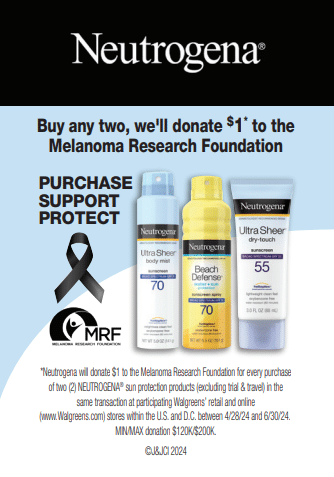
Melanoma Awareness Month Cause Marketing Partners:
We would like to thank our Melanoma Awareness Month cause marketing partners! Click below to see how our partners are giving back to the melanoma community and shop for a great cause!
Ways YOU Can Support This Month
Support the MRF today in mission critical melanoma research, education programming and more by signing up for our new text program or by making a one-time or reoccurring donation online.



















